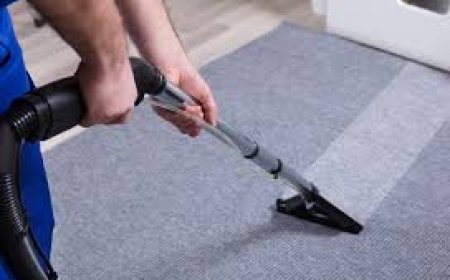The Ultimate Guide to HDPE Pond Liners: Durability, Benefits, and Installation Tips
When it comes to creating and maintaining a sustainable and reliable pond, choosing the right liner is crucial. HDPE (High-Density Polyethylene) Pond Liners have become an increasingly popular choice among pond owners due to their unmatched durability, flexibility, and ability to withstand a variety of environmental Pulkit Plastic Products conditions. This comprehensive guide will walk you through everything you need to know about HDPE pond liners, including their benefits, installation process, and maintenance tips.
What is an HDPE Pond Liner?
HDPE Pond Liners are made from high-density polyethylene, a tough plastic material that is highly resistant to chemical degradation, UV rays, and punctures. HDPE pond liners India is one of the most durable and reliable materials for creating pond liners because it offers a long lifespan while maintaining flexibility to conform to irregularly shaped ponds. It also helps prevent water loss by acting as a barrier to seepage, ensuring your pond stays filled with water.
HDPE pond liners are commonly used for both small garden ponds and large-scale industrial applications, such as irrigation systems, water reservoirs, and aquaculture farms. They are preferred over other types of liners like PVC or EPDM because of their superior resistance to environmental stress and their ability to withstand heavy use.
Key Benefits of Using HDPE Pond Liners
1. Durability
HDPE is known for its incredible strength and long-lasting performance. These liners can endure extreme weather conditions, including heat, cold, and UV exposure. With proper installation and maintenance, an HDPE pond liner can last for 30 years or more, making it a cost-effective choice for long-term pond owners.
2. Chemical and UV Resistance
One of the main reasons HDPE pond liners stand out is their resistance to both chemicals and UV radiation. This makes them perfect for ponds located in areas with high exposure to the sun. Whether it’s harsh chemicals in the soil or sunlight’s damaging UV rays, an HDPE liner will not degrade, crack, or become brittle, ensuring the integrity of your pond is maintained for years.
3. Environmental Friendliness
HDPE is an eco-friendly material, as it is recyclable and does not harm the environment when disposed of properly. Additionally, since it prevents water seepage, it helps conserve water by reducing evaporation loss, making it an environmentally responsible choice for water features like ponds.
4. Flexibility and Easy Installation
Despite being a strong material, HDPE pond liners are incredibly flexible, allowing them to adapt to irregular pond shapes and contours. The flexibility of these liners also makes installation easier, as they can be stretched or folded to fit any pond size. Additionally, they can be custom-made to suit your specific requirements, providing a perfect fit for your pond.
5. Leak Prevention
Leaks are one of the most common issues that pond owners face. HDPE pond liner India are designed to prevent water seepage and leaks, ensuring that the water stays in the pond where it belongs. This is crucial for maintaining the health of aquatic life, preventing water loss, and reducing maintenance costs.
How to Install an HDPE Pond Liner
While HDPE pond liners are incredibly durable and easy to work with, proper installation is key to ensuring that your pond remains leak-free and long-lasting. Here’s a step-by-step guide to installing an HDPE pond liner:
1. Prepare the Site
Before you begin, it’s essential to properly prepare the pond area. Clear the pond bed of any debris, sharp objects, or rocks that could puncture the liner. The surface should be smooth and even to ensure the liner fits properly.
2. Excavate the Pond
Once the site is clear, begin excavating the pond to the desired shape and depth. Ensure that the sides are slightly sloped to help distribute the weight of the water evenly and prevent the liner from shifting. Make sure to create a uniform depth, as irregularities in the depth could lead to stretching or damage to the liner.
3. Add a Protective Layer
For extra protection, consider adding a layer of sand or felt under the liner. This will prevent sharp objects or rocks from piercing through the liner, which could cause leaks. It’s important to make sure that the protective layer is even and smooth.
4. Unroll the Liner
Once your pond bed is prepared, unroll the HDPE liner over the pond. Begin at one end and gently lay the liner across the entire area. Smooth out any wrinkles or folds as you go along to ensure that the liner fits snugly against the pond’s surface.
5. Trim and Secure the Liner
Once the liner is in place, trim any excess material around the edges. Leave extra material around the edges to ensure the liner can be secured and anchored properly. You can use rocks, bricks, or soil to secure the liner around the pond’s perimeter.
6. Fill the Pond with Water
Once the liner is secured, begin filling the pond with water. As the water level rises, the liner will conform to the contours of the pond. Be sure to keep the liner in place as the water fills the pond to avoid any shifts.
7. Final Touches
Once the pond is filled, you can add finishing touches such as landscaping around the edges and adding aquatic plants or fish. The liner will continue to settle into place as the water level stabilizes.
Maintenance Tips for HDPE Pond Liners
To ensure that your HDPE pond liner for fish ponds performs optimally for years to come, it’s important to carry out regular maintenance. Here are a few tips to keep your pond liner in top shape:
- Inspect Regularly: Periodically check the liner for any signs of damage, punctures, or leaks. Promptly repair any issues to prevent water loss.
- Keep the Area Clean: Regularly remove debris, leaves, and dirt from the surface of the liner to prevent them from causing damage or degradation.
- Avoid Heavy Foot Traffic: Try to avoid walking or placing heavy objects on the liner, as this can cause unnecessary stress and potential damage.
- Monitor Water Quality: Maintain the water quality by checking pH levels, controlling algae, and ensuring that your pond’s ecosystem is balanced.
Conclusion
HDPE pond liners are an excellent choice for anyone looking to create a long-lasting, reliable, and leak-proof pond. Their superior durability, chemical resistance, and ease of installation make them the preferred material for both small garden ponds and large-scale water features. By following the proper installation and maintenance steps, you can enjoy a beautiful and functional pond for years to come, all while ensuring minimal environmental impact.
Frequently Asked Questions (FAQs)
1. How long will an HDPE pond liner last?
HDPE pond liners are highly durable and can last for 30 years or more with proper installation and maintenance. Their resistance to UV rays, chemicals, and extreme weather conditions contributes to their long lifespan.
2. Can HDPE pond liners be repaired if damaged?
Yes, HDPE pond liners can be repaired if damaged. Small punctures or tears can be fixed with a patch or adhesive designed for HDPE material. It’s important to repair damage promptly to prevent leaks.
3. Is HDPE safe for aquatic life?
Yes, HDPE is a non-toxic material and safe for aquatic life. It does not leach harmful chemicals into the water, making it an ideal choice for fish ponds, wildlife habitats, and aquatic plants.
4. Can I install an HDPE pond liner myself?
Yes, installing an HDPE pond liner is possible as a DIY project, provided you follow proper installation steps and take necessary precautions. However, for larger ponds or complex installations, you may want to consider hiring a professional for assistance.
What's Your Reaction?
 Like
0
Like
0
 Dislike
0
Dislike
0
 Love
0
Love
0
 Funny
0
Funny
0
 Angry
0
Angry
0
 Sad
0
Sad
0
 Wow
0
Wow
0























































